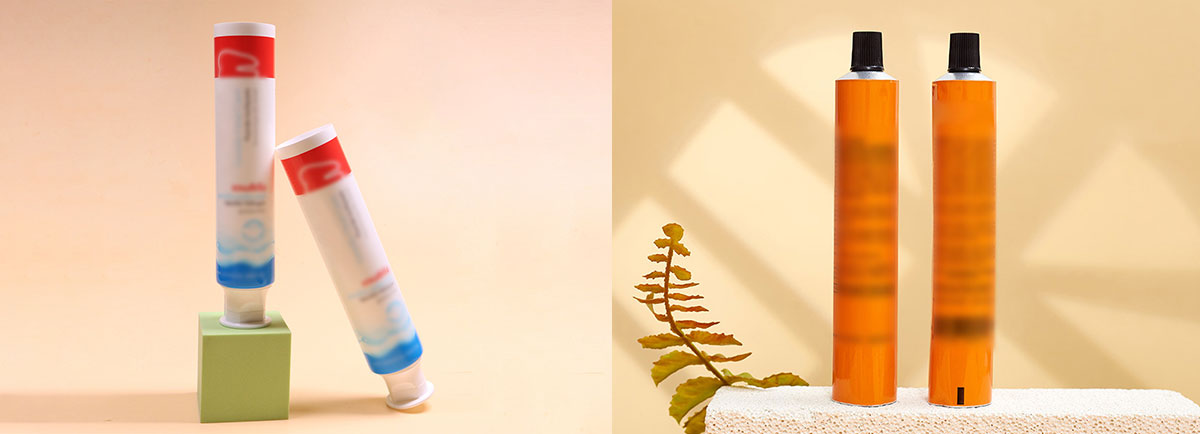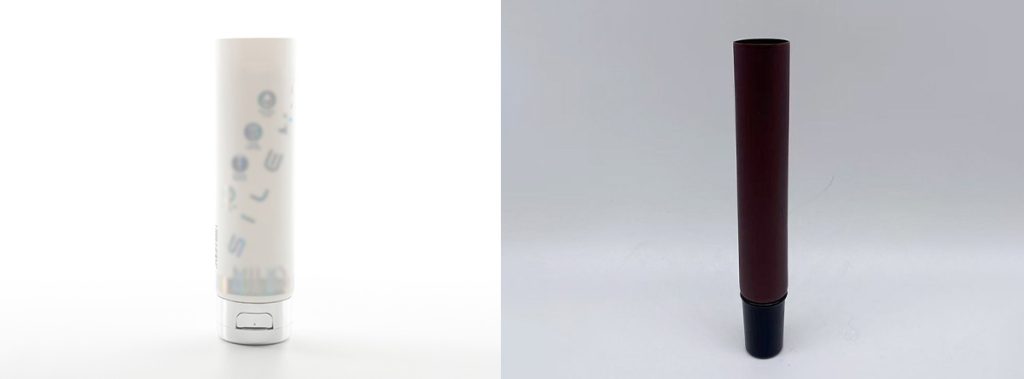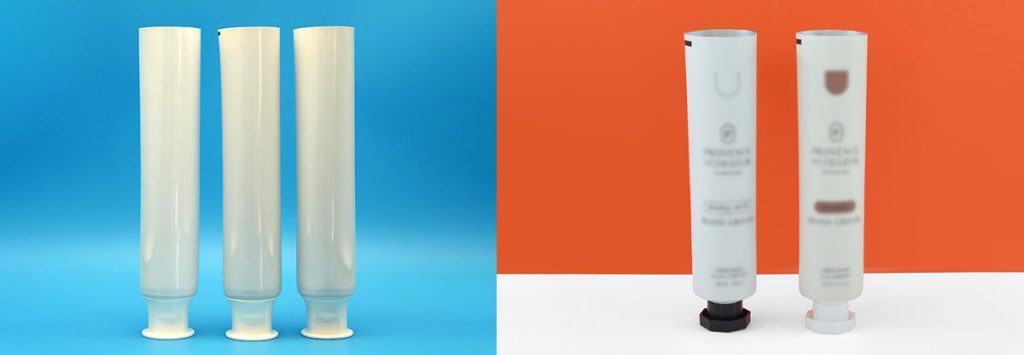

Identifying critical control points in the lami tube manufacturing process improves product safety and quality. A critical control point, or CCP, marks a stage where hazards can be prevented, eliminated, or reduced. The haccp plan uses hazard analysis and decision trees to pinpoint these CCPs. Material quality, machine performance, and operator skill affect production outcomes. The lami tube making machine plays a vital role in maintaining standards. Professionals rely on haccp methods to manage risks and ensure consistent production.
Key Takeaways
- Identifying critical control points (CCPs) is essential for ensuring product safety and quality in lami tube manufacturing.
- The haccp plan guides teams in monitoring hazards at each stage, from material selection to final inspection, to maintain high standards.
- Regular calibration and maintenance of the laminated tube making machine prevent breakdowns and ensure consistent production quality.
- Effective monitoring technologies, like automated systems, enhance safety and help detect issues early in the manufacturing process.
- Continuous improvement relies on regular reviews of the haccp plan and quality control checklist to adapt to changes and enhance production efficiency.
Critical Control Points Overview
Definition of Critical Control Points
Critical control points play a central role in the lami tube manufacturing process. International quality standards define a critical control point as a point, step, or procedure in a food manufacturing process at which control can be applied and, as a result, a food safety hazard can be prevented, eliminated, or reduced to an acceptable level. The table below presents this definition clearly:
| Term | Definition |
|---|---|
| Critical Control Point | A point, step, or procedure in a food manufacturing process at which control can be applied and, as a result, a food safety hazard can be prevented, eliminated, or reduced to an acceptable level. |
The haccp plan uses this definition to guide the identification of critical control points. Each point in the process where a hazard could occur must be evaluated. The haccp system ensures that every critical control point receives proper attention.
Role in Lami Tube Manufacturing Process
The lami tube manufacturing process involves several stages, each with unique risks. The haccp plan helps identify where hazards might arise, such as during material handling or machine operation. Operators monitor these critical control points to maintain product safety and quality.
The lami tube making machine often serves as a key area for control. Technicians check the machine for proper calibration and cleanliness. Any deviation at this stage could impact the entire production. The haccp plan requires regular checks and documentation at each critical control point.
Production teams rely on the haccp system to guide their daily routines. They use the haccp plan to set clear procedures for monitoring and corrective actions. The laminated tube making machine, along with other equipment, must meet strict standards. This approach ensures that the final product meets both safety and quality requirements.
Stages of Lami Tube Manufacturing Process
Material Selection
Material selection forms the foundation of the lami tube manufacturing process. Operators choose between plastic barrier laminate and aluminum barrier laminate based on the product’s needs. The table below highlights the critical properties:
| Laminate Type | Barrier Material | Thickness Range (µ) | Key Benefits |
|---|---|---|---|
| Plastic Barrier Laminate (PBL) | EVOH | 250 – 400 | Extends the lifetime of contents |
| Aluminium Barrier Laminate (ABL) | Aluminium | 250 – 400 | Protects aggressive content, enhances durability |
Variations in material quality impact critical control points. Consistent laminate quality ensures reliable output across different dimensions. Lower quality materials increase variability, especially at the apex and flanges, which can affect the adhesion process and overall production efficiency. The haccp plan requires thorough testing and output inspection of each batch to maintain standards.
Lami Tube Making Machine Operation
The laminated tube making machine drives production and manufacturing process control. Operators monitor several machine parameters as critical control points. The checklist includes tube alignment, filling nozzle precision, hopper cleanliness, sealing mechanism heat settings, calibration, and sensor accuracy. Regular calibration and maintenance shift the system from reactive to proactive controls. This approach prevents breakdowns and ensures the emergency stop button functions during unexpected events. Technicians also inspect air pressure, temperature controls, and electrical components to maintain output quality. The haccp plan emphasizes scheduled upkeep and documentation for every machine.
Regular calibration procedures help maintain accuracy and usability of machine tools. Proactive maintenance identifies minor issues before they escalate, ensuring reliable output and reducing downtime.
Printing and Sealing
Printing and sealing require strict controls to meet compliance standards. The haccp team analyzes material hazards and maps each step in the process. Operators validate the printing process by checking ink quality and label accuracy. The sealing process involves monitoring heat settings and the adhesion process to ensure product integrity. The haccp plan includes installing monitoring systems for air quality and sanitation. Employees receive training on haccp principles and corrective actions. Verification and validation through testing confirm that the system manages risks effectively.
The haccp principles form the backbone of packaging safety management. Hazard analysis and identification of critical control points at sealing lines and printing stations prevent contamination and ensure consistent output.
Final Inspection
Final inspection serves as the last checkpoint in the laminated tube production. Inspectors assess output inspection data to detect quality issues early. Regular inspections contribute to consistent quality and uncover inefficiencies in production. The haccp plan requires verification of compliance with established standards and identification of areas for improvement. Inspection minimizes wastage, scrapping, and recalls, protecting brand reputation and meeting regulatory requirements.
- Regular inspections lead to consistent quality.
- They help uncover production-related inefficiencies early.
- Inspections minimize wastage, scrapping, and recalls.
Continuous improvement relies on analyzing inspection results and updating controls. The system benefits from feedback, which enhances manufacturing process control and production efficiency.
Identifying Critical Control Points
Hazard Analysis Steps
Hazard analysis forms the backbone of identifying critical control points in the laminated tube production. Teams use a structured approach to ensure that every risk receives attention. The following steps guide professionals through effective hazard analysis:
- Define the Scope and Objectives
The team clarifies what part of the manufacturing process needs analysis. They set clear goals for safety and quality. - Assemble a Team
Experts from production, quality assurance, and machine maintenance join forces. Their combined knowledge covers all aspects of the lami tube making machine and laminated tube assembly. - Identify the Hazards
The team examines each stage, from material selection to output inspection. They look for risks in machine operation, adhesion process, and calibration. - Assess the Risks
Each hazard receives a risk rating. The team considers how likely the hazard is and how severe its impact could be on output and dimensions. - Develop and Implement Controls
Controls address the most significant risks. The team sets up monitoring systems, such as a high-precision control system, to track machine performance and operator actions. - Review and Update the PHA
Regular reviews keep the hazard analysis current. The team updates the quality control checklist and testing protocols to reflect new findings.
Hazard analysis outcomes influence identifying critical control points. Teams focus on root causes of defects, such as heavy workloads during inspection or gaps in operator training. They apply the 80/20 rule, targeting the most impactful issues for control.
- The hazard analysis identified root causes of assembly defects, such as heavy workload in inspection and poor learning abilities in workers.
- Critical control points were determined based on the 80/20 rule, focusing on the most impactful issues identified during the analysis.
Using Decision Trees

Decision trees help teams pinpoint critical control points with greater accuracy. These models guide professionals through each step of the lami tube production, ensuring that no hazard goes unnoticed. The decision tree classifier optimizes stacking sequences in laminated tube production, improving manufacturing process control.
| Model Type | Application in Manufacturing |
|---|---|
| Decision Tree Classifier | Optimization of stacking sequence in laminated FRP |
Decision trees offer several advantages over traditional methods. They provide a structured hazard analysis, objective decision-making, and clear monitoring procedures. These benefits support the haccp plan and quality control methods.
| Advantage of Decision Trees | Description |
|---|---|
| Structured Hazard Analysis | Provides a systematic evaluation of each production step, ensuring thorough hazard assessment. |
| Objective Decision-Making | Reduces reliance on subjective judgment, leading to consistent classification of CCPs. |
| Clear Monitoring Procedures | Aids in defining critical limits and monitoring for each identified CCP, enhancing food safety management. |
Operators use decision trees to evaluate machine calibration, emergency stop button functionality, and controls for the adhesion process. The system supports regular testing and output inspection, helping teams maintain production efficiency.
Decision trees simplify the process of identifying critical control points. They guide teams through complex decisions, reducing errors and improving output quality.
Establishing Critical Limits
Establishing critical limits ensures that each critical control point remains effective. Teams set measurable boundaries for machine temperature, pressure, and calibration. These limits define acceptable ranges for output and dimensions. The haccp plan requires teams to document each limit and monitor them using a high-precision control system.
Operators check the laminated tube making machine for compliance with critical limits. They use testing and output inspection to verify that the machine meets standards. If a parameter falls outside the limit, the team initiates corrective actions. Regular reviews of critical limits keep the system responsive to changes in production and material quality.
- Teams update the quality control checklist to reflect new critical limits.
- Operators receive training on monitoring procedures and corrective actions.
- The haccp plan supports ongoing improvement by reviewing limits after each inspection cycle.
Material, machine, and operator factors all play a role in CCP management. Teams consider laminate type, machine calibration, and operator skill when setting and reviewing critical limits. This approach strengthens manufacturing process control and supports consistent output.
Regular review of critical limits helps teams respond quickly to changes in production. It protects product safety and maintains high standards for laminated tube manufacturing.
Safety Precautions and Monitoring
Monitoring Procedures
Effective monitoring procedures form the backbone of safety precautions in the lami tube manufacturing process. Operators rely on advanced technologies to track critical control points and maintain consistent output. The lami tube making machine uses automation and integrated safety features to reduce manual labor and protect both operators and equipment. Automated output and coding systems convey finished tubes and apply traceability codes, supporting compliance and efficient distribution.
Automated vision systems scan for surface flaws, misalignment, or missing caps, detecting errors early in production. Traceability systems link each batch of laminate tubes to specific production lots, enabling quick responses to any issues. These monitoring technologies enhance manufacturing process control and support the haccp plan by providing real-time data for decision-making.
| Monitoring Technology | Purpose/Function |
|---|---|
| Automation | Reduces manual labor, increases throughput, and maintains consistent product quality. |
| Integrated Safety Features | Protects operators and equipment through overload protection and interlock shutdowns. |
| Automated Output and Coding | Conveys finished tubes and applies traceability codes for compliance and efficient distribution. |
| Automated Vision Systems | Detects errors early by scanning for surface flaws, misalignment, or missing caps. |
| Traceability Systems | Tracks each batch of laminate tubes, linking them to specific production lots for quick responses. |
Operators perform regular calibration of the lami tube making machine to ensure accuracy in output and dimensions. Monitoring procedures include scheduled checks of machine alignment, temperature, and pressure. The haccp plan requires documentation of all monitoring activities, supporting continuous improvement and production efficiency.
Tip: Consistent monitoring and control of critical control points help prevent defects and maintain high standards in production.
Safety training and the use of personal protective equipment remain essential. Operators receive instruction on monitoring procedures and the correct use of safety gear. This approach minimizes risks and supports the overall safety of the system.
Corrective Actions
Corrective actions address deviations detected during monitoring and control of the lami tube manufacturing process. When a critical control point falls outside established limits, the team investigates the root cause and implements solutions. Deviations may result from human error, machine failures, or environmental factors. Addressing these issues requires thorough investigation, proper documentation, and the implementation of corrective and preventive actions.
- Utilize a modern Electronic Document Management System (EDMS) for effective document control and storage.
- Establish guidelines for timely and accurate documentation of deviation management activities.
- Conduct periodic internal audits of deviation management records to ensure compliance and quality.
- Retain records in accordance with regulatory requirements.
Corrective actions aim to eliminate the cause of nonconformity and prevent recurrence. Preventive actions focus on addressing potential issues before they occur. The haccp plan supports both approaches, ensuring that the lami tube making machine and other equipment operate within safe parameters.
Operators follow established protocols for calibration and maintenance. They document all corrective actions and update the quality control checklist as needed. Regular safety training reinforces the importance of personal protective equipment and proper response to deviations.
Note: Timely corrective actions protect product safety and maintain output quality. Teams should review deviation records regularly to identify trends and improve manufacturing process control.
Quality Control Checklist
A comprehensive quality control checklist supports early defect detection and consistent output in the lami tube production. The checklist covers key aspects of production, including quantity, packaging, labeling, dimensions, and material verification. Operators use the checklist to verify that each tube meets required specifications and tolerances.
| Checklist Item | Description |
|---|---|
| Quantity | Verify the number of laminated tubes produced against the order quantity to ensure accuracy. |
| Package & Packaging | Assess packaging suitability to prevent defects during transport. |
| Product Logo, Labeling & Markings | Verify markings for legibility and accuracy to ensure compliance with specifications. |
| Measurement | Inspect dimensions to ensure they meet required specifications and tolerances. |
| Material Certificate Verification | Check material certificates for compliance with chemical and mechanical property standards. |
| Product Workmanship | Conduct visual checks for defects that may affect quality and performance. |
| Mechanical Tests Required | Perform tests such as flaring, flange, hardness, and tensile tests to evaluate mechanical properties. |
Operators update the quality control checklist regularly to reflect changes in critical control points. Updates may occur due to changes in product design, regulatory standards, process improvements, technology upgrades, or feedback from operators and quality audits.
| Condition for Update |
|---|
| Changes in product design or requirements |
| Updates in regulatory or industry standards |
| Process improvements or technology upgrades |
| Feedback from operators or quality audits |
The haccp plan requires teams to review and revise the checklist after each inspection cycle. This practice supports continuous improvement and helps maintain high standards in production. The system benefits from operator feedback and audit results, strengthening manufacturing process control and supporting production efficiency.
Reminder: Regular updates to the quality control checklist help teams detect defects early and respond quickly to changes in production requirements.
Personal protective equipment and safety precautions remain central to maintaining a safe working environment. Operators use the checklist to verify compliance with safety standards and ensure that all machine calibration and output inspections meet established criteria.

Conclusion
The lami tube manufacturing process depends on careful identification and management of critical control points. Teams use the haccp plan to guide hazard analysis, decision trees, and regular reviews. Operators monitor the lami tube making machine and update the checklist to keep the machine and output within safe limits. The haccp system, supported by machine calibration and safety training, helps maintain high production standards. For ongoing improvement, teams should review the haccp plan, monitor machine performance, and document all haccp activities.
Tip: Regular haccp reviews and machine checks help teams catch issues early and keep production safe.
FAQ
What Is the Purpose of the Haccp Plan in Lami Tube Manufacturing?
The haccp plan helps teams identify and control hazards during lami tube production. It sets clear steps for monitoring each critical control point. This plan improves safety and quality in every stage of the process.
How Does the Machine Affect Critical Control Points?
The machine determines the accuracy and consistency of laminated tube production. Operators check calibration, temperature, and pressure. Regular maintenance ensures the machine meets the standards set by the haccp plan.
Why Is Monitoring Important in the Haccp System?
Monitoring allows teams to detect problems early. The haccp system uses real-time data from the machine to track output and safety. Quick responses to issues help maintain product quality and prevent defects.
How Often Should Teams Update the Haccp Plan?
Teams should review the haccp plan after each inspection cycle. Updates may follow changes in product design, machine upgrades, or new regulations. Regular reviews keep the process safe and efficient.
What Role Does Operator Training Play in Machine Safety?
Operator training ensures safe and correct use of the machine. Well-trained staff follow the haccp plan and respond quickly to any issues. Training reduces errors and supports consistent production.
